Your cart is currently empty!
Month: July 2024
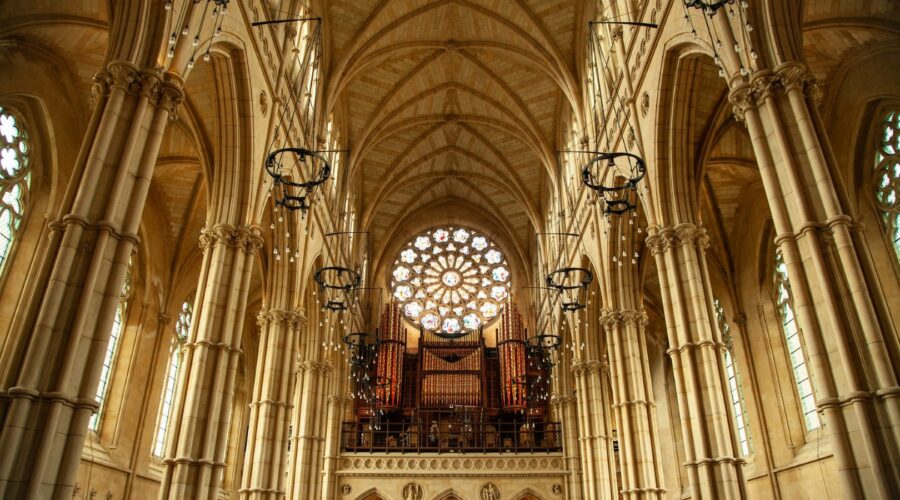
Unveiling the Grandeur of the Cathedral of the Blessed Sacrament
The Cathedral of the Blessed Sacrament is a majestic edifice that stands as a testament to the enduring power of faith and architectural brilliance. Situated in downtown Sacramento, California, it is the heart of the Catholic Diocese of Sacramento and a beacon of spirituality for the faithful.
Historical Significance
The origins of the Cathedral can be traced back to the early days of the city of Sacramento. In 1851, a small wooden church was built on the site of the present cathedral. As the city grew and the Catholic population expanded, the need for a larger and more permanent structure became apparent.
The construction of the current Cathedral began in 1887 and was completed in 1890. The design was inspired by the Gothic Revival style and incorporates intricate stone carvings, stained glass windows, and soaring spires.
Architectural Marvel
The Cathedral of the Blessed Sacrament is a masterpiece of Victorian Gothic architecture. Its imposing facade features two massive towers that dominate the skyline of downtown Sacramento.
Exterior
- Twin Towers: The two towers are 220 feet tall and are topped with spires that reach a height of 270 feet.
- Stone Carvings: The exterior is adorned with intricate stone carvings depicting biblical scenes and figures.
- Stained Glass Windows: The Cathedral boasts over 100 stained glass windows that depict scenes from the life of Christ and the saints.
Interior
- Nave: The vast nave is the main body of the Cathedral and can accommodate over 1,200 worshippers.
- Altar: The High Altar is a stunning work of art, made of marble and gold, and is the focal point of the Cathedral.
- Transepts: The transepts extend from the nave and form the arms of the cross-shaped plan of the Cathedral.
- Choir Loft: The choir loft is located above the High Altar and houses the Cathedral’s choir and organ.
Religious Significance
As the Cathedral of the Diocese of Sacramento, the Cathedral of the Blessed Sacrament is the seat of Bishop Jaime Soto. It is a center of worship for the Catholic community and hosts numerous liturgies, sacraments, and special events throughout the year.
The Cathedral is also home to the Blessed Sacrament, which is the consecrated bread that Catholics believe to be the body and blood of Jesus Christ. The Blessed Sacrament is kept in a tabernacle on the High Altar and is adored by worshippers.
Tours and Events
The Cathedral of the Blessed Sacrament is open to the public for tours and visits. Guided tours are available by appointment.
The Cathedral also hosts a variety of events throughout the year, including concerts, lectures, and art exhibitions. For more information, please visit the Cathedral’s website: https://www.cathedralsacramento.org
Conclusion
The Cathedral of the Blessed Sacrament is a landmark in downtown Sacramento and a symbol of the city’s rich history and cultural heritage. Its stunning architecture, religious significance, and vibrant community make it a must-see destination for visitors and worshippers alike.
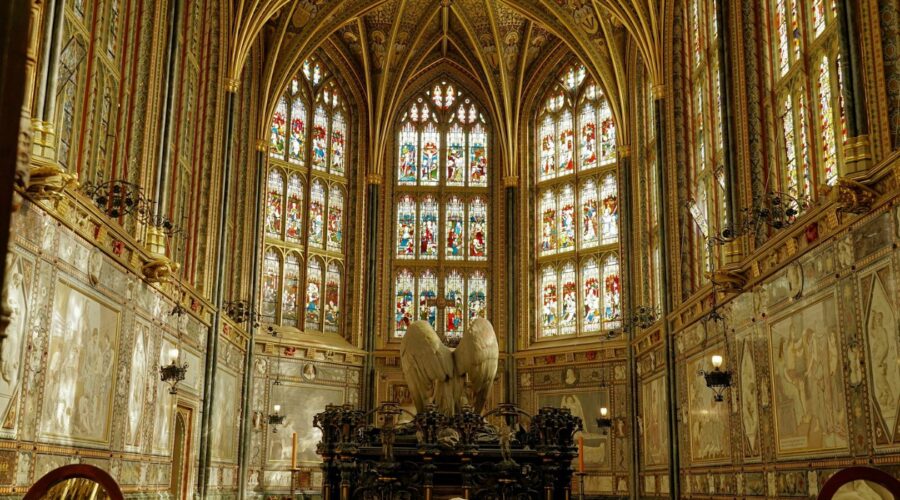
Discover the Majestic Grandeur of St. Paul’s Cathedral: An Architectural Masterpiece
Introduction
Nestled majestically in the heart of the City of London, St. Paul’s Cathedral stands as a timeless symbol of architectural brilliance. Its stunning dome, towering spires, and exquisite interior have captivated hearts and inspired awe for centuries. In this comprehensive guide, we embark on a journey to uncover the captivating history, intricate design, and enduring significance of this iconic cathedral.
Historical Overview
Origins and Construction
The origins of St. Paul’s Cathedral can be traced back to the 7th century, when a wooden church was erected on Ludgate Hill. Over the centuries, successive iterations of the cathedral were built, including a Romanesque basilica and a Gothic structure. The current cathedral, designed by Christopher Wren after the Great Fire of London in 1666, was constructed over a period of 35 years, from 1675 to 1710.
Sir Christopher Wren’s Vision
Sir Christopher Wren, the renowned architect behind St. Paul’s Cathedral, envisioned a masterpiece that would rival the great cathedrals of Europe. Inspired by the Italian Renaissance and Baroque styles, Wren designed a majestic structure with a central dome and two flanking towers.
Architectural Marvel
The Dome
The centerpiece of St. Paul’s Cathedral is its magnificent dome, one of the largest in the world. Standing at 111 meters (365 feet), the dome is double-shelled, with an outer dome visible from afar and an inner dome that creates an awe-inspiring interior space.
Whispering Gallery
Beneath the outer dome lies the Whispering Gallery, an acoustic wonder where a whisper uttered against the wall can be heard clearly on the opposite side of the dome, over 30 meters away.
Stone Gallery and Golden Gallery
External galleries, including the Stone Gallery and Golden Gallery, offer breathtaking panoramic views of London.
Interior Grandeur
The interior of St. Paul’s Cathedral is equally impressive, featuring a vast nave, soaring transepts, and an exquisite high altar.
Cultural and Ecclesiastical Significance
National Symbol
St. Paul’s Cathedral has served as a national symbol for centuries, hosting royal weddings, funerals, and other significant events in British history.
Religious Centerpiece
As the seat of the Bishop of London, St. Paul’s Cathedral remains an active place of worship and a spiritual haven for the Anglican Communion.
Historical Events
The cathedral has witnessed numerous historical events, including the signing of the Magna Carta in 1215 and the funeral of Lord Nelson in 1805.
Visiting St. Paul’s Cathedral
Practical Information
- Address: St. Paul’s Churchyard, London EC4M 8AD
- Opening Hours: Monday-Saturday 8:30 am – 4:30 pm, Sunday for worship
- Admission Fees: Vary depending on the level of access desired
Tips for Visitors
- Book tickets in advance to avoid queues, especially during peak season.
- Allow plenty of time to explore the cathedral, as there is much to see and admire.
- Consider guided tours to delve deeper into the history and architecture.
- Dress respectfully, as the cathedral is an active place of worship.
Accessibility
St. Paul’s Cathedral strives to be accessible to all visitors. There is level access to the cathedral floor and limited wheelchair access to the Whispering Gallery and Stone Gallery.
Conclusion
St. Paul’s Cathedral is an architectural masterpiece that has stood the test of time. Its majestic dome, intricate interior, and enduring significance have placed it among the most iconic and beloved landmarks in the world. Whether you are a history buff, an architecture enthusiast, or simply seeking spiritual inspiration, a visit to St. Paul’s Cathedral is an unforgettable experience that will leave you in awe.
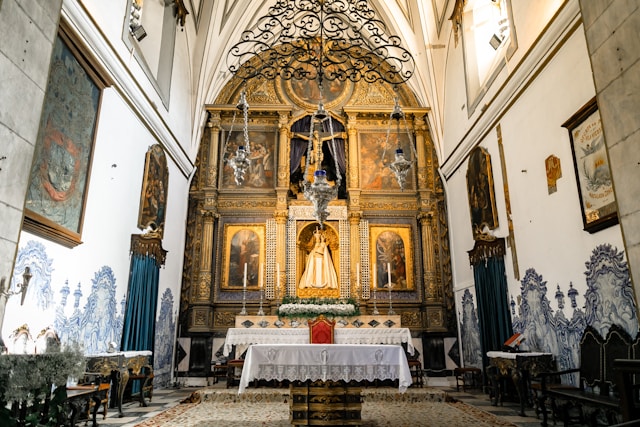
Cathedral of Christ the King: A Monumental Masterpiece of Modern Architecture
Introduction
Nestled in the heart of Atlanta, Georgia, the Cathedral of Christ the King stands as a testament to the enduring power of faith and the transformative nature of architectural vision. This awe-inspiring edifice, consecrated in 1968, is a captivating blend of modernism and Byzantine influences, showcasing the ingenuity and artistry of its creator, renowned architect, and priest, Francis Joseph Keally.
Architecture and Design
The Cathedral’s striking silhouette is a symphony of geometric forms and soaring lines. Its central feature is the massive hyperbolic paraboloid roof, an engineering marvel that spans 200 feet and rises to a height of 125 feet. This innovative design, inspired by the fluidity of the ocean, allows for a vast, column-free interior, creating a sense of limitless space and boundless connection with the divine.
Complementing the roof’s graceful curves are the Cathedral’s soaring stained glass windows, each a vibrant masterpiece of color and light. Designed by Michael J. Dwyer, these windows depict scenes from the Bible and the lives of saints, casting a kaleidoscope of hues onto the interior, transforming the space into a living canvas of faith.
Interior Splendour
The Cathedral’s interior is a sanctuary of tranquility and beauty. The vast expanse of the nave is punctuated by a series of arches and columns, creating a sense of rhythm and flow. The focal point of the space is the altar, a stunning work of art designed by John F. Stevens. Crafted from marble and bronze, the altar is an exquisite representation of Christ’s triumph over death, with its centerpiece being a 12-foot bronze crucifix.
Surrounding the altar is a series of chapels, each dedicated to a different saint or aspect of the Catholic faith. The Chapel of the Blessed Sacrament, in particular, is a secluded sanctuary where the Eucharist is reserved, offering a place for quiet contemplation and connection with the divine presence.
Spiritual Significance
Beyond its architectural grandeur, the Cathedral of Christ the King is a vibrant and active centre of faith. As the seat of the Archdiocese of Atlanta, it is the spiritual home to close to 2 million Catholics. Masses are held regularly, offering a sacred gathering place for prayer, community, and the celebration of sacraments.
The Cathedral also plays a significant role in the broader Atlanta community. It hosts a variety of outreach programs, including a food pantry, a shelter for the homeless, and a tutoring program for underprivileged youth. These initiatives reflect the Cathedral’s commitment to serving those in need and fostering a spirit of compassion and justice.
Historical Context and Impact
The Cathedral’s construction was a testament to the growing confidence and aspiration of the Atlanta Catholic community in the post-World War II era. It replaced the former Cathedral of Christ the King, which had burned down in 1955. The new Cathedral was designed to be a symbol of faith, unity, and progress for the city.
The Cathedral’s architectural style was both cutting-edge and deeply rooted in tradition. Its modern forms and materials represented a departure from the traditional Gothic and Romanesque styles of many cathedrals, while its Byzantine influences, such as the use of domes and mosaics, paid homage to centuries of Christian architectural heritage.
Visitors’ Experience
Visiting the Cathedral of Christ the King is an unforgettable experience that combines awe and inspiration. Visitors are welcome to explore the Cathedral at their own pace, admiring its architectural beauty and absorbing its spiritual atmosphere.
Guided tours are available, providing visitors with insights into the Cathedral’s history, design, and symbolism. The tour culminates in a visit to the rooftop terrace, offering panoramic views of downtown Atlanta and the surrounding cityscape.
Practical Information
- Address: 2699 Peachtree Rd NW, Atlanta, GA 30305
- Hours: Open daily from 8:00 AM to 6:00 PM
- Mass Times: Visit the Cathedral’s website for the latest mass schedule
- Accessibility: The Cathedral is wheelchair accessible and provides assistive listening devices for the hearing impaired
- Admission: Free of charge
Conclusion
The Cathedral of Christ the King is a true architectural masterpiece, showcasing the transformative power of faith and the brilliance of human ingenuity. Its soaring forms and radiant interior create a space where the sacred and the secular meet, inspiring awe and inviting contemplation. As a symbol of the Atlanta Catholic community, the Cathedral stands as a beacon of hope, unity, and unwavering commitment to the pursuit of the divine.
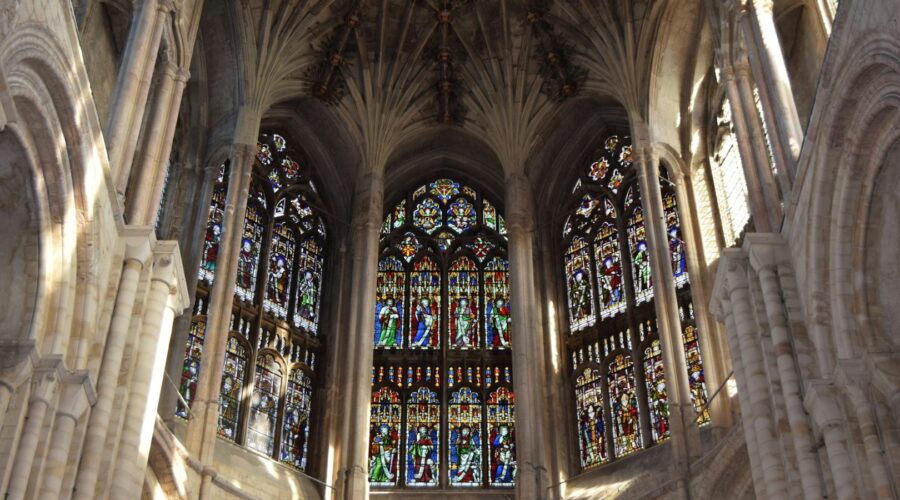
Unveiling the Architectural Marvels of Cathedral Basilicas
Introduction
Cathedral basilicas, with their towering spires, intricate stained glass windows, and awe-inspiring interiors, are testaments to human ingenuity and spiritual devotion. These monumental structures have played a pivotal role in shaping faith, culture, and architecture for centuries. In this comprehensive guide, we delve into the multifaceted aspects of cathedral basilicas, exploring their history, design, significance, and iconic examples from around the globe.
History and Evolution
The origins of cathedral basilicas can be traced back to the early Christian era. The term “basilica” initially referred to a large public building in ancient Rome used for various civic and administrative functions. As Christianity grew, basilicas were adapted into places of worship due to their ample space and rectangular floor plan.
During the Middle Ages, cathedral basilicas evolved into architectural masterpieces. The incorporation of Gothic elements such as pointed arches, vaulted ceilings, and elaborate ornamentation transformed them into symbols of power and grandeur. Over time, cathedral basilicas became centers of religious, political, and cultural life, reflecting the social and economic status of the communities they served.
Architectural Features
Cathedral basilicas are typically characterized by their:
1. Floor Plan
Most cathedral basilicas follow a rectangular or cruciform floor plan. They comprise a central nave, flanked by side aisles that lead to a transept, creating a cross-shaped structure.
2. Facade and Towers
The facade of a cathedral basilica often features an elaborate main entrance, flanked by towers that frame the building and provide a dramatic focal point.
3. Spires and Steeples
Many cathedral basilicas are adorned with soaring spires or steeples that rise above the surrounding cityscape, serving as beacons of spirituality and architectural prowess.
4. Windows
Cathedral basilicas are renowned for their magnificent stained glass windows, which depict biblical scenes, saints, and other religious imagery, filling the interiors with vibrant colors and ethereal light.
5. Interior Decoration
The interiors of cathedral basilicas are often adorned with opulent decorations, including marble floors, frescoes, sculptures, and lavish altars. These elements contribute to the grandiose and awe-inspiring ambiance.
Significance and Impact
Cathedral basilicas have had a profound impact on societies throughout history:
1. Religious Centers
Cathedral basilicas are the principal churches of a diocese, serving as the seat of the bishop or archbishop. They are focal points for worship, prayer, and sacraments.
2. Cultural Hubs
Cathedral basilicas have often been the setting for major religious and cultural events, including coronations, weddings, and festivals. They have also played a significant role in education and the arts.
3. Architectural Landmarks
Cathedral basilicas are recognized as architectural masterpieces that embody the technical advancements and artistic sensibilities of their time. They have inspired countless artists, architects, and engineers.
4. Symbols of Power and Prestige
Throughout history, cathedral basilicas have been commissioned and built by rulers and wealthy patrons to demonstrate their devotion, power, and status within the community.
Iconic Examples
Some of the most famous and awe-inspiring cathedral basilicas in the world include:
1. St. Peter’s Basilica, Rome, Italy
Considered one of the holiest Catholic churches, St. Peter’s Basilica is an architectural marvel with its iconic dome and vast interior, housing priceless works of art.
2. Notre Dame Cathedral, Paris, France
A symbol of Gothic architecture, Notre Dame Cathedral is renowned for its intricate facade, flying buttresses, and breathtaking stained glass windows.
3. Westminster Abbey, London, United Kingdom
A UNESCO World Heritage Site, Westminster Abbey is a historic cathedral where British monarchs have been crowned for centuries. Its Gothic architecture and intricate interior are a testament to its enduring beauty.
4. Cologne Cathedral, Germany
One of the largest Gothic churches in the world, Cologne Cathedral is characterized by its soaring spires, massive stained glass windows, and elaborate sculptures.
5. Seville Cathedral, Spain
The largest Gothic cathedral in the world, Seville Cathedral is a masterpiece of Islamic and Christian architecture, featuring a breathtaking interior adorned with intricate decorations.
Conclusion
Cathedral basilicas are architectural wonders that have shaped the fabric of our civilization for centuries. Their awe-inspiring interiors, iconic facades, and historical significance continue to captivate pilgrims, tourists, and art enthusiasts alike. As we delve deeper into the world of cathedral basilicas, we gain a profound appreciation for the human creativity, spirituality, and architectural ingenuity that have given us these magnificent structures.
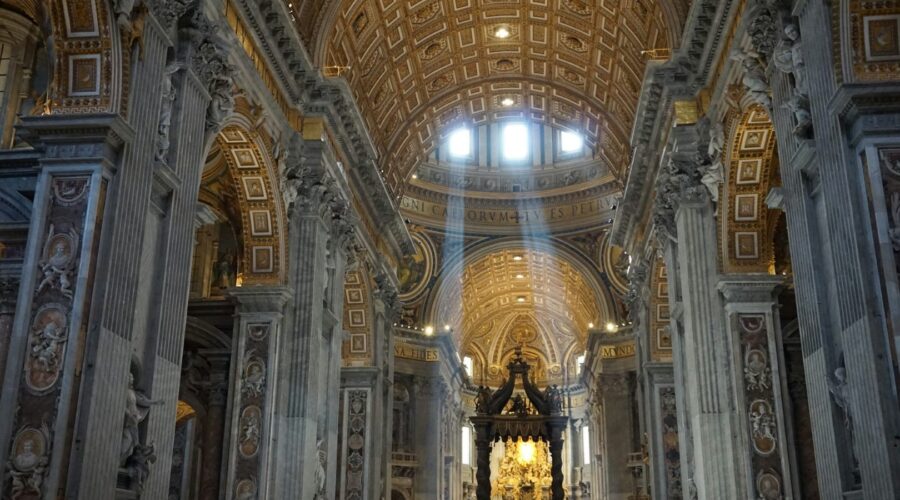
Carl Lentz: The Rise and Fall of Hillsong’s Former Star Pastor
Introduction
Carl Lentz, the former lead pastor of the Hillsong megachurch in New York City, has been at the center of controversy since his firing in November 2020. Accusations of infidelity, abuse, and misconduct have tarnished his reputation and raised questions about the culture of Hillsong.
Carl Lentz’s Rise to Prominence
Early Life and Ministry
Carl Lentz was born in Virginia Beach, Virginia, in 1979. He attended Hillsong’s college in Australia before becoming a youth pastor at the Hillsong Church in Sydney. In 2010, he moved to New York City as the lead pastor of Hillsong NYC.
Celebrity Pastor
Lentz quickly gained a large following in New York, becoming known for his charisma, stylish fashion, and celebrity connections. He preached to celebrities such as Justin Bieber, Selena Gomez, and Kevin Durant.
Allegations and Investigation
Infidelity Accusations
In November 2020, Hillsong announced that Lentz had been fired after admitting to an “ongoing immoral relationship.” The woman involved was later identified as Ranin Karim, a former designer for Nike.
Other Allegations
Following the infidelity allegations, other former members of Hillsong NYC came forward with accusations of abuse, manipulation, and financial mismanagement. Lentz was accused of pressuring members to give large donations and of creating a toxic work environment.
External Investigations
In response to the allegations, Hillsong commissioned an independent investigation by Guidepost Solutions. The report, released in February 2022, confirmed the infidelity and found evidence of “abusive behavior” and “manipulation.” However, it did not find evidence of financial mismanagement.
Aftermath and Impact
Lentz’s Apology and Redemption
Lentz has since apologized for his actions and expressed his desire to make amends. He has started his own podcast and is working on writing a book about his experiences.
Hillsong’s Response
Following the scandal, Hillsong has taken steps to address the issues raised in the investigation. It has implemented new policies and procedures and is working to improve its culture.
Wider Impact on Pentecostalism
The Carl Lentz scandal has raised questions about the culture and governance of Pentecostal churches. It has highlighted the importance of accountability and transparency and the need for pastors to be held to a high standard.
Lessons Learned
Importance of Accountability
The Carl Lentz scandal underscores the importance of accountability in religious leadership. Pastors and other church leaders must be held to account for their actions and be willing to face consequences if they fail to meet ethical standards.
Need for Transparency
Churches must be transparent about their operations and finances. This helps build trust and prevents abuse and misconduct.
Addressing Toxic Culture
Churches need to address and prevent toxic workplace cultures. This includes creating clear expectations, providing support for employees, and fostering a culture of respect.
Importance of Grace
While accountability and transparency are important, it is also important to extend grace to those who have made mistakes. Churches should be places of redemption and restoration, not condemnation.
Conclusion
The Carl Lentz scandal has been a difficult chapter for Hillsong and the Pentecostal movement. However, it has also been an opportunity for reflection and growth. By addressing the issues raised in the scandal, Hillsong and other churches can learn valuable lessons about the importance of accountability, transparency, and a healthy church culture.

Carl Lentz Now: Unraveling the Fallout and Redemption of a Former Celebrity Pastor
Introduction
Carl Lentz, the former celebrity pastor of Hillsong New York, has been a polarizing figure since his highly publicized departure from the megachurch in November 2020. Once a prominent spiritual leader with a global following, Lentz fell from grace amidst allegations of moral failures and an extramarital affair.
This blog post delves into the circumstances surrounding Lentz’s downfall, explores his current status, and unpacks the lessons to be learned from his journey.
The Rise and Fall of Carl Lentz
Born in Virginia Beach, Virginia, Carl Lentz rose to prominence as the lead pastor of Hillsong New York, a branch of the Australian-based megachurch conglomerate.
Celebrity Pastor Status
- Lentz’s charismatic personality and stylish preaching style attracted a large following, including celebrities like Justin Bieber, Kendall Jenner, and Kevin Durant.
- He became a sought-after speaker and author, publishing books such as “Own the Moment” and “Becoming a Hero.”
Allegations and Departure
In November 2020, Hillsong Global announced that Lentz had been fired after violating the megachurch’s “moral code.” The church revealed that an investigation had uncovered “ongoing inappropriate relationships” between Lentz and a congregant.
Aftermath and Redemption
Lentz’s dismissal sent shockwaves through the Christian community and beyond. In the aftermath of his public disgrace:
Public Apology and Confession
- Lentz released a statement apologizing for his actions, admitting to “moral failings” and “sins.”
- He confessed to an extramarital affair and excessive alcohol consumption.
Fallout and Isolation
- Lentz lost his role as pastor, his reputation, and his celebrity status.
- He faced intense scrutiny and judgment from the public and within the Christian community.
Redemption and Recovery
Despite his setbacks, Lentz has embarked on a journey of redemption and recovery:
- He entered a rehabilitation program and sought professional help for his addiction and other issues.
- He has reconnected with his family and is focused on rebuilding his life.
Lessons Learned
The story of Carl Lentz serves as a cautionary tale and offers important lessons for us:
Accountability and Humility
Leaders, both secular and religious, must hold themselves accountable for their actions and live by the principles they preach.
Addiction and Mental Health
Addictions and mental health disorders can affect anyone, regardless of their status or beliefs. It’s important to seek help when struggling with these issues.
The Power of Forgiveness
Forgiveness is not about condoning wrongdoings but about releasing bitterness and allowing individuals to move forward.
Redemption and Second Chances
Even after making serious mistakes, people deserve opportunities for redemption and to rebuild their lives.
Conclusion
The story of Carl Lentz remains an ongoing one. His journey serves as a reminder of the human capacity for both failure and redemption.
While his actions may have brought shame and disappointment, his commitment to recovery and rebuilding his life offers hope that even in the face of adversity, redemption is possible.
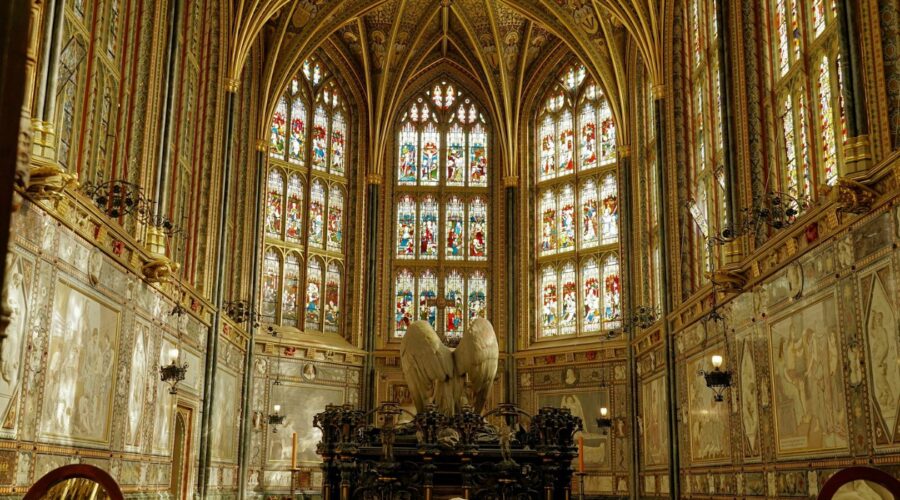
Calvary Mount: A Comprehensive Guide to Its History, Significance, and Meaning
Introduction
Calvary Mount, also known as Golgotha, holds profound historical and religious significance. As the site of Jesus Christ’s crucifixion, it has become a sacred destination for millions of pilgrims and a symbol of hope and redemption for Christians worldwide.
This comprehensive guide explores the history, significance, and spiritual meaning of Calvary Mount. We will delve into the biblical accounts, archaeological evidence, and the enduring impact of this hallowed ground on Christianity and Western civilization.
History of Calvary Mount
Biblical Accounts
According to the New Testament Gospels, Calvary Mount was a hill outside the city walls of Jerusalem where Jesus Christ was crucified. The name “Golgotha” is derived from the Aramaic word “gulgaltha,” meaning “skull,” possibly referring to its shape or association with a place of execution.
The Gospels describe Jesus carrying his cross to Calvary, being crucified between two criminals, and dying on the cross. After his burial, the tomb was sealed and guarded by Roman soldiers.
Archaeological Evidence
Archaeological excavations have uncovered evidence of a first-century stone quarry north of the present-day Church of the Holy Sepulchre, which some scholars believe may have been the site of Calvary Mount. The remains of a large rock-cut tomb, known as the Garden Tomb, have also been discovered nearby and have been suggested as a possible burial site of Jesus.
Significance of Calvary Mount
The Crucifixion
The crucifixion of Jesus Christ on Calvary Mount is the central event of Christianity. It represents the sacrifice of God’s son for the redemption of humanity’s sins. According to Christian belief, Jesus’ death and resurrection conquered death and opened the way for eternal life.
Pilgrimage and Devotion
Calvary Mount has been a destination for Christian pilgrims for centuries. The first known pilgrimage to the site occurred in the fourth century AD, and by the time of the Crusades, it had become one of the most important pilgrimage sites in Christendom.
Today, millions of pilgrims visit Calvary Mount annually, paying homage to the place where Jesus died and was resurrected. Many engage in prayer, meditation, and reflection, seeking spiritual renewal and connection with the divine.
Symbolism and Iconography
Calvary Mount has become a potent symbol in Christian art, architecture, and literature. It often depicts the crucifixion of Jesus and serves as a reminder of his sacrifice and the promise of salvation. The three crosses on Calvary represent the unity of the Father, Son, and Holy Spirit in Christian theology.
Meaning of Calvary Mount for Christians
Redemption and Forgiveness
For Christians, Calvary Mount symbolizes God’s love and mercy. Through Jesus’ crucifixion, God’s plan for redemption unfolded, offering forgiveness of sins and eternal life to those who believe. The cross on Calvary represents the victory over sin and death.
Hope and Renewal
Calvary Mount is also a place of hope and renewal. Jesus’ resurrection, which took place nearby, signifies the triumph of life over death. It inspires hope in the face of adversity and the promise of eternal life for those who follow Christ.
Tips for Visiting Calvary Mount
Visiting Hours
The Church of the Holy Sepulchre, which houses Calvary Mount, is typically open daily from early morning until evening. However, it’s advisable to check the website or contact the church for specific visiting hours during special occasions or holidays.
Dress Code
As a sacred site, visitors are expected to dress respectfully. Modest clothing that covers shoulders and knees is recommended. Avoid wearing revealing or offensive clothing.
Be Prepared for Crowds
Calvary Mount is a popular pilgrimage site, especially during religious holidays. Be prepared for large crowds and long lines. Patience and respectful behavior are essential.
Take Your Time
Don’t rush your visit. Take time to explore the Church of the Holy Sepulchre, visit the numerous chapels and shrines, and reflect on the profound significance of this sacred place.
Conclusion
Calvary Mount is a place of immense historical, religious, and spiritual significance. It is the site where Jesus Christ’s crucifixion and resurrection took place, events that have had a profound impact on Christianity and Western civilization.
Visiting Calvary Mount is an unforgettable experience that provides Christians and pilgrims alike with an opportunity for spiritual growth, reflection, and connection with the divine. It is a place that inspires hope, renewal, and the unwavering belief in God’s love and mercy.
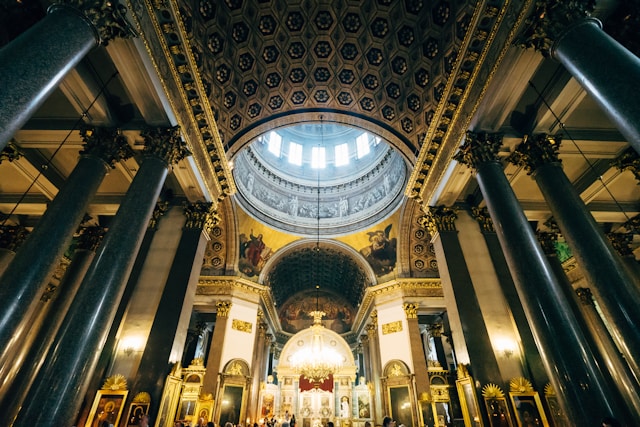
Carl Lentz: A Fallen Star in the Evangelical World
Who is Carl Lentz?
Carl Lentz was a prominent evangelical pastor who gained widespread recognition as the lead pastor of Hillsong Church NYC, a branch of the global Hillsong Church network. Known for his charismatic preaching style and celebrity connections, Lentz became a media darling, appearing on popular shows such as “Good Morning America” and “The View.”
Rise to Fame
Lentz joined Hillsong in 2010 and quickly established himself as a rising star. With his youthful appearance, hip wardrobe, and engaging sermons, he attracted a large following, particularly among young adults. The church expanded under his leadership, becoming a destination for celebrities and influencers seeking spiritual guidance and community.
Personal Life and Controversies
Outside of the pulpit, Lentz cultivated an active social media presence, showcasing his affluent lifestyle and connections to celebrities such as Justin Bieber and Selena Gomez. However, his personal life became a source of controversy when in 2021, allegations of infidelity and misconduct surfaced.
Fall from Grace
The allegations against Lentz shook the evangelical community. Hillsong Church immediately distanced itself from Lentz, removing him from his position as pastor and announcing an internal investigation. The findings of the investigation were never publicly released, but Lentz admitted to “moral failures” and entered a rehabilitation program.
Impact on Hillsong Church
The Lentz scandal cast a dark shadow over Hillsong Church. The once-thriving congregation faced widespread criticism and saw a decline in attendance and donations. The church was forced to undergo a significant restructuring and appointed a new leadership team to restore trust and rebuild its reputation.
Fallout for Lentz
The fallout for Lentz was severe. He lost his high-profile position and support from his celebrity followers. Lentz’s marriage to his wife, Laura, was strained by the allegations, and they eventually divorced. He also faced legal challenges, including an extortion case brought against him by a former mistress.
Lessons Learned
The Carl Lentz saga serves as a cautionary tale for religious leaders and followers alike. It highlights the dangers of allowing fame and power to corrupt one’s character and the importance of accountability and transparency within religious institutions.
Conclusion
Carl Lentz’s rise and fall is a story of charisma, cautionary tales, and the complexities of religious leadership. While Lentz’s personal failures overshadowed his previous accomplishments, his story remains a reminder of the importance of integrity, humility, and accountability in all aspects of life.

BUMC: Everything You Need to Know
What is BUMC?
BUMC, or Boston University Medical Campus, is a leading academic medical center located in Boston, Massachusetts. It is affiliated with Boston University School of Medicine and Boston Medical Center. BUMC is consistently ranked among the top medical centers in the United States and is known for its excellence in research, education, and patient care.
BUMC’s Mission
BUMC’s mission is to improve the health of the people we serve through excellence in research, education, and patient care. We are committed to providing compassionate, high-quality care to our patients, advancing medical knowledge through research, and educating the next generation of healthcare providers.
BUMC’s Core Values
BUMC’s core values are:
- Patient-centered care
- Excellence in research
- Teaching and learning
- Diversity and inclusion
- Innovation
BUMC’s Services
BUMC offers a wide range of services, including:
- Primary care
- Specialty care
- Surgery
- Emergency care
- Imaging
- Laboratory services
- Rehabilitation
BUMC is also home to several nationally recognized centers of excellence, including the:
- Boston University Alzheimer’s Disease Research Center
- Boston University Center for Regenerative Medicine
- Boston University Prostate Cancer Center
- Boston University Vascular Center
BUMC’s Research
BUMC is a major center for medical research. The school of medicine receives more than $400 million in research funding annually. The research focuses on a wide range of topics, including:
- Cancer
- Cardiovascular disease
- Neurological disorders
- Infectious diseases
- Aging
BUMC researchers have made significant contributions to the understanding and treatment of these diseases.
BUMC’s Education
BUMC is a leading center for medical education. The school of medicine offers a variety of programs, including:
- MD program
- PhD program
- Residency programs
- Fellowship programs
BUMC’s faculty are renowned for their expertise in teaching and research. The school of medicine has a strong commitment to providing students with a well-rounded education that prepares them for a successful career in medicine.
BUMC’s Future
BUMC is committed to continuing its tradition of excellence in research, education, and patient care. The medical center is investing in new technologies and initiatives to improve the health of the people we serve. BUMC is also expanding its international reach to collaborate with other leading medical centers around the world.
Table of BUMC Affiliated Hospitals
| Hospital | Location |
|—|—|
| Boston Medical Center | Boston, MA |
| Boston University School of Medicine | Boston, MA |
| Boston Children’s Hospital | Boston, MA |
| Brigham and Women’s Hospital | Boston, MA |
| Massachusetts General Hospital | Boston, MA |BUMC in the News
- BUMC Researchers Discover New Treatment for Alzheimer’s Disease
- BUMC Launches New Center for Regenerative Medicine
- BUMC Receives Major Grant to Study Cardiovascular Disease
Contact BUMC
| Department | Phone Number |
|—|—|
| Admissions | (617) 638-5300 |
| Patient Services | (617) 414-4000 |
| Research | (617) 638-4800 |
| Education | (617) 638-4900 |
Brethren: Definition, Meaning, and Its Significance in Different Contexts
Introduction
The term “brethren” holds deep significance in various contexts, carrying a sense of kinship, camaraderie, and shared experiences. From religious and fraternal organizations to historical references, the word “brethren” evokes a strong bond among individuals who share a common purpose or identity. In this blog post, we will delve into the multifaceted meaning and usage of the term “brethren,” exploring its origins, historical significance, and contemporary applications.
Origins and Etymology
The word “brethren” originates from the Old English word “brēþren,” which evolved from the Proto-Germanic term “*brōþrōz.” It originally referred to a group of people who were related by blood or marriage, commonly used to address or refer to brothers. Over time, the usage of “brethren” expanded, extending beyond biological connections to embrace individuals who shared a common bond or affiliation.
Religious Contexts
Christianity
In Christianity, the term “brethren” played a significant role in shaping the early church community. The apostles and disciples of Jesus referred to each other as “brethren,” reflecting their strong sense of unity and shared purpose in spreading the Gospel. This usage is evident in the New Testament, where phrases like “brethren in the Lord” and “beloved brethren” are frequently employed.
Other Religions
Beyond Christianity, the term “brethren” has also found its way into other religious traditions. In Islam, for example, the concept of brotherhood (ukhuwwah) is central to Muslim identity. Muslims believe they are all part of a global community of believers, and they refer to each other as “brethren in faith.” Similar sentiments can be found in other religions, such as Buddhism and Hinduism, where individuals who share spiritual beliefs and practices often form tight-knit communities known as “brethren.”
Fraternal Organizations
Another prominent context where the term “brethren” is used is within fraternal organizations, particularly those that originated in the United States. Masonic lodges, for example, refer to their members as “brethren.” These organizations provide a sense of community and support among individuals who share similar values, interests, or professional backgrounds. Brethren in fraternal organizations often engage in charitable activities and social gatherings, fostering a spirit of brotherhood and camaraderie.
Historical References
Throughout history, the term “brethren” has been employed to describe groups of people who fought together in wars or shared other significant experiences. For instance, during the American Civil War, soldiers on both sides often addressed each other as “brethren,” acknowledging their common humanity even amidst conflict. Similarly, in the context of historical exploration, groups of explorers who embarked on expeditions together were referred to as “brethren,” reflecting their shared journey and the challenges they faced.
Contemporary Applications
In addition to its traditional usage, the term “brethren” has taken on new meanings in contemporary contexts. It is often used to refer to individuals who share similar interests, passions, or hobbies. For example, within online communities and forums, people with common interests may refer to each other as “brethren,” indicating their sense of kinship and shared experiences. Moreover, in some modern spiritual and philosophical movements, the term “brethren” is employed to describe individuals who share a particular worldview or seek enlightenment together.
Conclusion
The term “brethren” holds a multifaceted meaning, encompassing a range of contexts from religious and fraternal organizations to historical references and contemporary applications. Its origins as a reference to blood or marriage-related individuals have evolved over time, embracing individuals who share a common bond, purpose, or experience. Whether used in the context of Christianity, Islam, or other religions, fraternal organizations, historical accounts, or contemporary communities, the term “brethren” evokes a sense of unity, kinship, and shared journey. By understanding the diverse meanings and usage of “brethren,” we gain a deeper appreciation for the power of human connection and the ways in which we can form meaningful relationships with those around us.
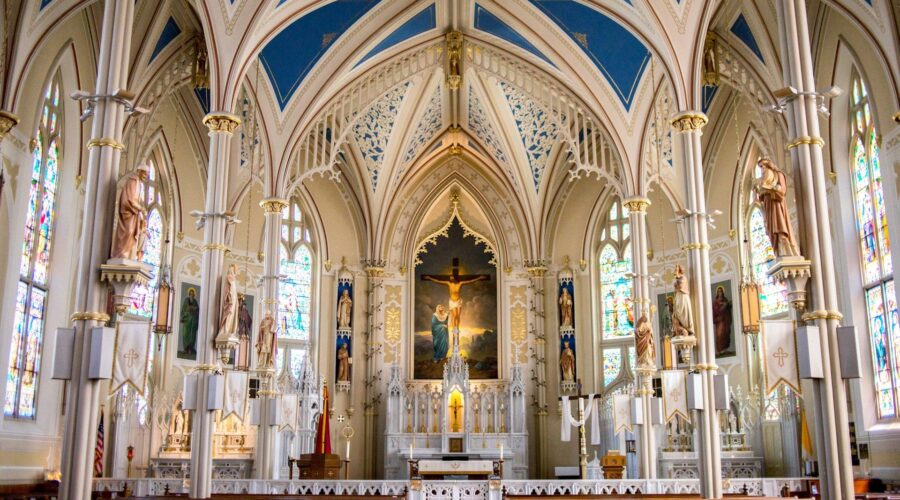
Discover the Enchanting Bom Jesus Basilica: A Majestic Pilgrimage Destination
Historical Significance
The Bom Jesus Basilica, located in the picturesque town of Braga, Portugal, is a monumental Baroque masterpiece and one of the most important religious sites in the country. Constructed in the 18th century, the basilica holds immense historical and cultural significance, attracting pilgrims and visitors from far and wide.
The Divine Stairway
The basilica’s most iconic feature is the majestic Divine Stairway, consisting of 578 granite steps adorned with exquisite azulejo tiles. Each step represents a prayer or penitence, and pilgrims often ascend them on their knees as a form of devotion. At the top of the stairway lies the basilica’s imposing facade, boasting elaborate ornamentation and statues.
Architectural Splendor
The Bom Jesus Basilica is a testament to the Baroque architectural style, characterized by its grandeur and intricate details. The basilica’s facade is adorned with columns, arches, and a profusion of carvings. The interior is equally impressive, featuring a spacious nave, elegant chapels, and a magnificent gilded altar.
The Baroque Sanctuary
At the heart of the basilica lies the Baroque Sanctuary, a sanctuary of intricate beauty. Intricate frescoes, gilded paintings, and elaborate woodwork decorate the sanctuary, creating an awe-inspiring atmosphere. Here, pilgrims and visitors can marvel at the sacred image of the Bom Jesus, the “Good Jesus,” considered to have miraculous powers.
Pilgrimage and Faith
The Bom Jesus Basilica has been a major pilgrimage destination for centuries. Pilgrims come from all over the world to ascend the Divine Stairway, pray at the sanctuary, and seek spiritual renewal. The basilica plays a vital role in the religious and cultural life of the surrounding communities.
The Via Crucis
In addition to the Divine Stairway, pilgrims can also experience the Via Crucis, a series of chapels depicting the Passion of Christ. Set along a shaded path, the chapels feature life-sized statues and offer a poignant reflection on the life and sacrifice of Jesus.
Tourism and Culture
Beyond its religious significance, the Bom Jesus Basilica is also a popular tourist destination. Visitors are drawn to its architectural beauty, historical importance, and picturesque surroundings. The basilica is often included in tours of Braga and the surrounding region.
Significance and Impact
The Bom Jesus Basilica has had a profound impact on the region and beyond. Its architectural grandeur has inspired other churches and monuments, and its spiritual importance has shaped the religious beliefs and practices of countless people. The basilica continues to be a symbol of faith, pilgrimage, and the rich cultural heritage of Portugal.
Conclusion
The Bom Jesus Basilica is a captivating fusion of history, architecture, and spirituality. Its Divine Stairway, Baroque splendor, and role as a pilgrimage destination make it an unforgettable destination for pilgrims, tourists, and anyone seeking inspiration and tranquility. Whether you come seeking spiritual renewal or simply to appreciate its architectural beauty, the Bom Jesus Basilica is sure to leave a lasting impression.
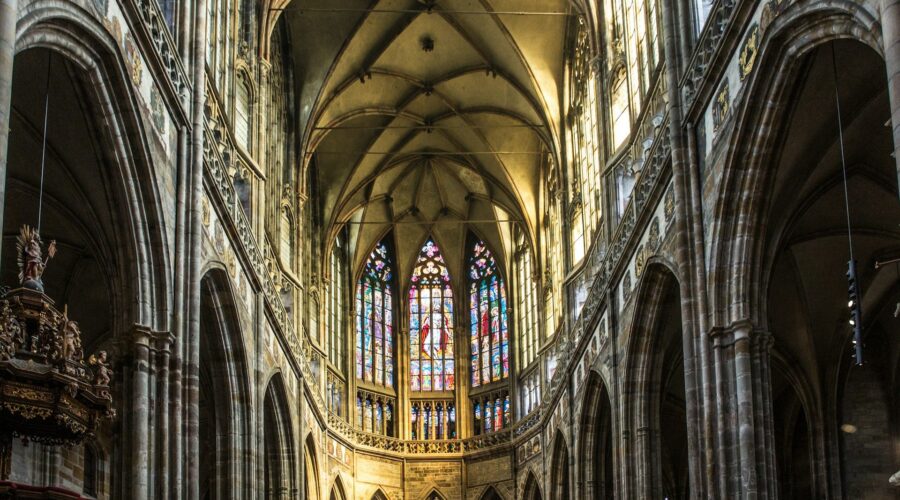
Bobbie Houston: A Journey of Faith, Leadership, and Impact
Introduction
Bobbie Houston is a renowned pastor, author, and Christian leader who has made a significant impact on the global church. With her husband Brian, she co-founded Hillsong Church, one of the world’s largest and most influential churches. This blog post explores the journey of Bobbie Houston, her unwavering faith, visionary leadership, and the transformative impact she has had on countless lives.
Early Life and Calling
Humble Beginnings
Bobbie Houston was born in New Zealand in 1957. Her early life was marked by challenges, including her father’s sudden death when she was just 10 years old. Despite these hardships, Bobbie’s faith in God remained strong.
Encountering the Gospel
At the age of 15, Bobbie attended a Christian youth event where she encountered the gospel message in a transformative way. She accepted Jesus Christ as her Savior and embarked on a journey of spiritual growth and service.
Co-Founding Hillsong Church
Partnership with Brian Houston
In 1977, Bobbie met Brian Houston, a young pastor from Australia. They shared a common vision for a church that would be a lighthouse of hope and transformation in the community. Together, they founded Hillsong Church in 1983.
Exponential Growth and Impact
Hillsong Church experienced remarkable growth under Bobbie and Brian’s leadership. From humble beginnings, it expanded to become a global movement with over 150,000 members in over 30 countries.
Pastoral Ministry and Leadership
Empowering Women in Leadership
Bobbie Houston is a passionate advocate for the empowerment of women in ministry and leadership. She has mentored and supported countless women, helping them to discover and fulfill their God-given potential.
Values-Based Leadership
Bobbie’s leadership is characterized by her unwavering commitment to biblical values, integrity, and servant-heartedness. She believes that true leadership is about empowering others and building up the body of Christ.
Author and Teacher
Spirit-Filled Writing
Bobbie Houston is also a gifted author. Her books, including “A Woman’s Spirit,” “You Need More Love,” and “He Calls Me Daughter,” have inspired and encouraged millions of readers worldwide.
Teaching Ministry
Bobbie is a renowned teacher who shares her insights on faith, leadership, and personal growth through conferences, online courses, and her podcast, “The Bobbie Show.”
Personal Life and Challenges
Family and Marriage
Bobbie Houston is married to Brian Houston and they have three children together. Their marriage has been a source of strength and support throughout their ministry journey.
Overcoming Adversity
Bobbie has faced personal challenges, including a cancer diagnosis in 2015. Through it all, her faith has remained unshaken, and she continues to inspire others with her resilience and unwavering spirit.
Legacy and Impact
Global Influence
Bobbie Houston’s influence extends far beyond Hillsong Church. She is a sought-after speaker and mentor, impacting the lives of countless Christians around the world.
Transforming Communities
Hillsong Church, under Bobbie and Brian’s leadership, has had a transformative impact on the communities it serves. From social welfare initiatives to disaster relief efforts, the church has made a tangible difference in the lives of people.
Inspiring Millions
Bobbie Houston’s inspiring story, unwavering faith, and visionary leadership continue to inspire and encourage millions of people worldwide. Her legacy as a pioneer, teacher, and mentor will endure for generations to come.
Conclusion
Bobbie Houston is a true icon in the Christian world. Her journey of faith, leadership, and impact is a testament to the grace of God and the transformative power of the gospel message. As a pastor, author, teacher, and role model, she has touched countless lives and left an enduring legacy of hope, love, and inspiration.